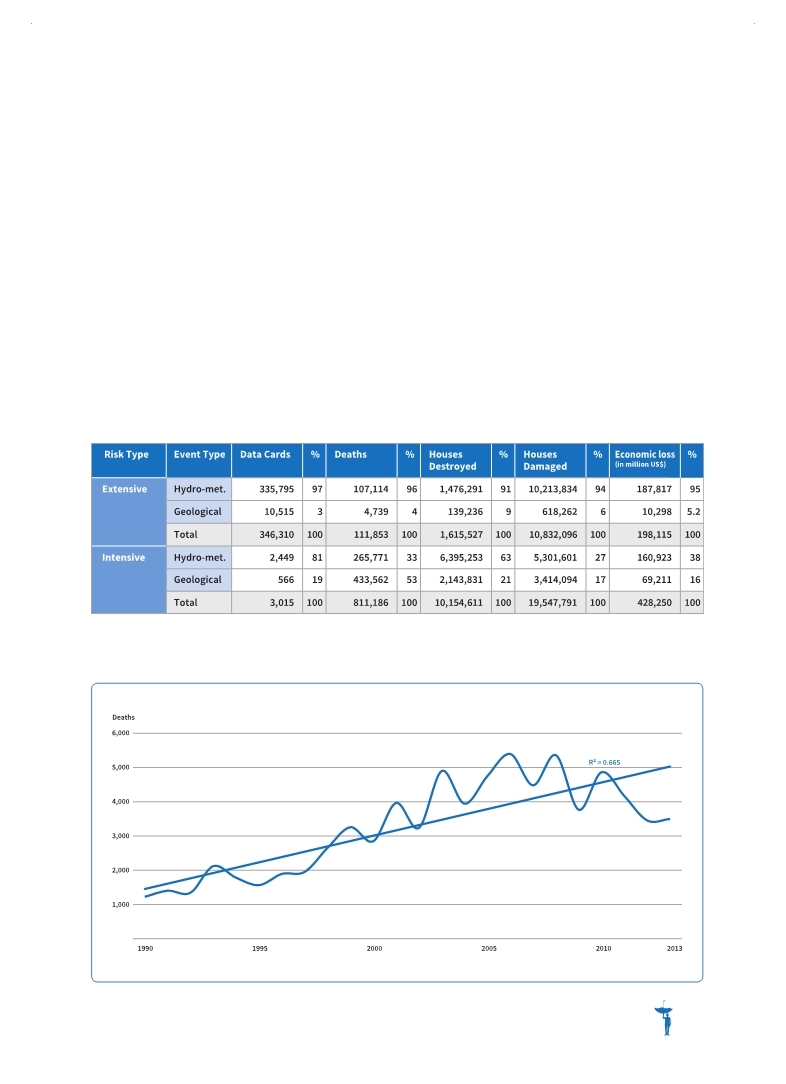 |
Global Assessment Report on Disaster Risk Reduction 2015
Making development sustainable: The future of disaster risk management |
 |
Global Assessment Report on Disaster Risk Reduction 2015
Making development sustainable: The future of disaster risk management |
|
|

93
(Source: UNISDR with data from national loss databases.)
Table 4.1 National disaster loss data for 85 countries and states4
this risk layer remained largely invisible. However, since 2007, a sustained effort to assist countries in systematically recording local disaster losses (UNISDR, 2009a
UNISDR. 2009a,Global Assessment Report on Disaster Risk Reduction: Risk and Poverty in a Changing Climate, Geneva, Switzerland: UNISDR.. . Table 4.1 shows that 99.1 per cent of the local-level loss reports from these 85 countries and states are manifestations of extensive risk, with 96.4
per cent resulting from weather-related events. The economic losses from extensive disasters account for more than 45 per cent of total accumulated loss.
Across these countries, extensive disasters are responsible for only 14 per cent of total disaster mortality. However, since 1990 extensive mortality has increased almost fourfold in those countries that have consistent data spanning that period (Figure 4.3), and the trend is statistically significant.
(Source: UNISDR with data from national loss databases.)
Figure 4.3 Extensive mortality, 1990-2013 (65 countries, 2 states)5
|
 
Page 1Page 10Page 20Page 30Page 40Page 50Page 60Page 70Page 80Page 83Page 84Page 85Page 86Page 87Page 88Page 89Page 90Page 91Page 92Page 93Page 94->Page 95Page 96Page 97Page 98Page 99Page 100Page 101Page 102Page 103Page 104Page 105Page 106Page 107Page 110Page 120Page 130Page 140Page 150Page 160Page 170Page 180Page 190Page 200Page 210Page 220Page 230Page 240Page 250Page 260Page 270Page 280Page 290Page 300Page 310
|
|
 
|
 
|
